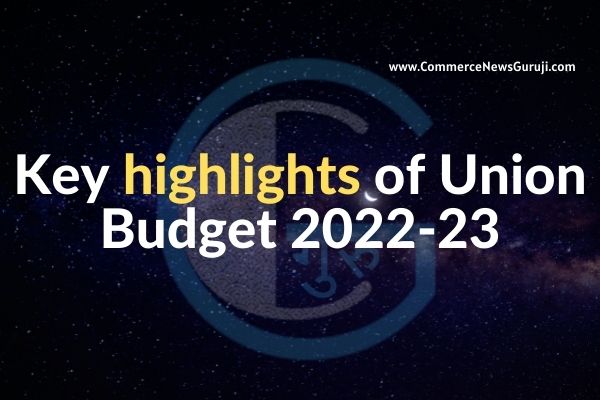The Union Budget 2022-23 was presented paperless on Tab by the Finance Minister on 01 February 2022. Here are the key highlights of the budget:
A. Direct and Indirect Tax:
- Proposal to allow the filing of an updated return for correcting errors within 2 years from the end of the relevant assessment year, with payment of additional tax.
- AMT reduced from 18.5% to 15% on co-operative societies.
- Surcharge reduced from 12% to 7% on co-operative societies for those having total income of more than Rs. 1 crore and up to Rs. 10 crores.
- The parent or guardian of a differently-abled person can take an insurance scheme for such person. The present law provides for deduction to the parent or guardian only if the lump sum payment or annuity is available to the differently abled person on the death of the subscriber i.e. parent or guardian. The budget now allows the payment of annuity and lump sum amount to the differently abled dependent during the lifetime of parents/guardians, i.e., on parents/ guardians attaining the age of sixty years.
- Tax deduction limit to NPS Account by state government employees raised to 14% from 10% in line with Central Government employees.
- Gain on Virtual Digital Asset (VDA) taxed @ 30%. No deduction in respect of any expenditure or allowance shall be allowed while computing such income except cost of acquisition. Further, loss from transfer of virtual digital asset cannot be set off against any other income. TDS on payment made in relation to transfer of virtual digital asset at the rate of 1 per cent of such consideration above a monetary threshold. Gift of virtual digital asset is also proposed to be taxed in the hands of the recipient.
- TDS @ 1% on transfer of VDA.
- Surcharge on Long Term Capital Gains on the transfer of any type of asset to be capped at 15%.
- No set off, of any loss shall be allowed against undisclosed income detected during search and survey operations.
- Date of tax incentive for start-ups extended to March 2023.
- Custom Duty on umbrellas 20%.
- Surcharge or Cess not to be allowed as business expenditure. Law to be amended to overrule judgements of High Courts.
- Eligible start-ups established before 31.3.2022 had been provided a tax incentive for three consecutive years out of ten years from incorporation. In view of the Covid pandemic, the budget provides for extending the period of incorporation of the eligible start-up by one more year, that is, up to 31.03.2023 for providing such tax incentive.
- SEZ will be replaced with new legislation.
- Center for Accelerated Corporate Exit to be set up. The process to be digitized and aims to bring the corporate exit time within 6 months.
B. General:
- Digital Rupee to be introduced by RBI using blockchain technology in FY 2022-23.
- E-Passports will be rolled out in FY 2022-23.
- Economic Growth to be 9.2% for FY 2022-23.
- Railways to develop projects for MSME small businesses.
- 400 new Vande Bharat trains to be initiated in next 3 years.
- Digital University to be created.
- 1.5L Post Offices to be linked to core banking.
- ECLGS Scheme extended till March 2023.
- A battery swapping policy will be brought out for electric vehicles.
- Sovereign Green bonds to be issued for mobilizing green energy and to reduce carbon intensity.
- Fiscal deficit for FY 2021-22 to be at 6.9% of the GDP and for FY 2022-23 is estimated to be at 6.4% of the GDP.
(Also read: 10 best investments for Tax Saving)
(Also read: GST Revenue collection for January 2022)
(Also read: GST Revenue collection for December 2021)
(Also read: No restrictions on account operations due to non-compliance of KYC till 31 March 2022)
Disclaimer: The above post includes some content used from PIB India website and executed on this website for fair use only. As this website is of educational nature, hence the content is used for education and awareness to the public.

